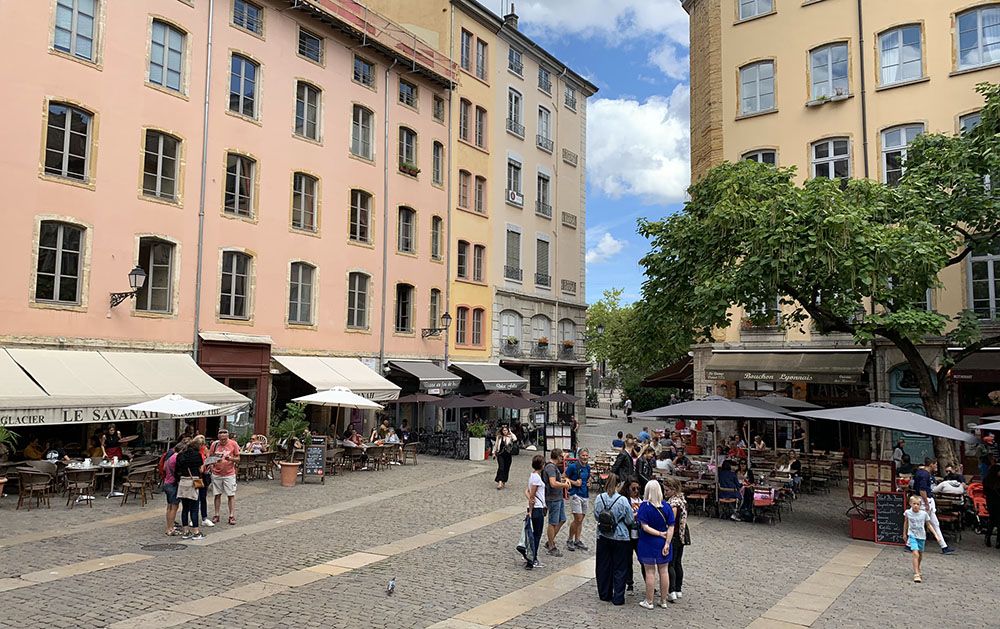City trip to the silk city of Lyon
Lyon was already an important city at the time of the Roman Empire. Thanks to the many preserved sights in history, various parts of the city have been recognised as UNESCO World Heritage Sites. Lyon is a lively metropolis that offers its visitors special architecture and culture. The third largest city in France is also a true culinary paradise. Lyon has the most restaurants per square kilometre in the world.
In this blog, we will take you on a day’s walk through the Vieux Lyon district. We conclude with a brief description of the Presqu’ile and Croix-Rousse neighbourhoods because, just like Vieux Lyon, they are neighbourhoods that, as far as we’re concerned, you shouldn’t leave out when visiting Lyon.
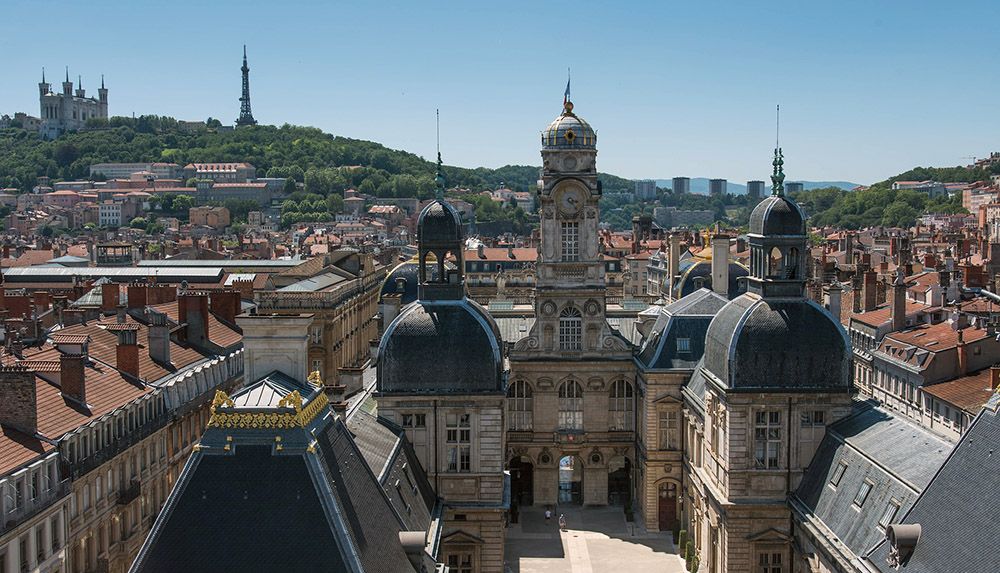
Walk through the city of Vieux Lyon
A possible starting point for your city walk, especially if you come by public transport from outside the city centre, is Place Bellecour in the Presqu’ile district. This third largest square in France, a UNESCO World Heritage Site, is only accessible to pedestrians. A map of the city can be obtained from the Tourist Office. There is also an art gallery and two statues, including one by Louis XIV. Events are often held on the square.
The old city of Lyon
From Place Bellecour you cross the Saône and walk towards Vieux Lyon, the old town of Lyon. On Saturday there is a food market along the quay of the Saône with delicious, local products. Vieux Lyon is a residential area from the Middle Ages and Renaissance at the foot of the Fourvière. This hill is decisive in the townscape of Lyon. Together with Venice, Vieux Lyon is one of the largest residential areas of the aforementioned period that is still intact. The district is on the UNESCO World Heritage List.
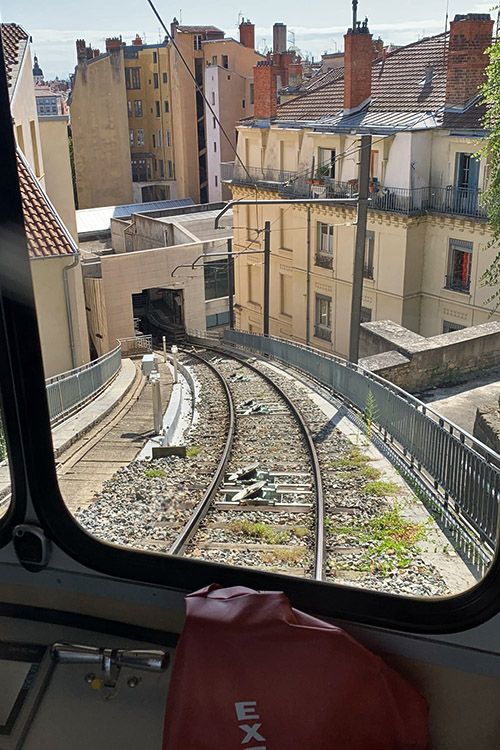
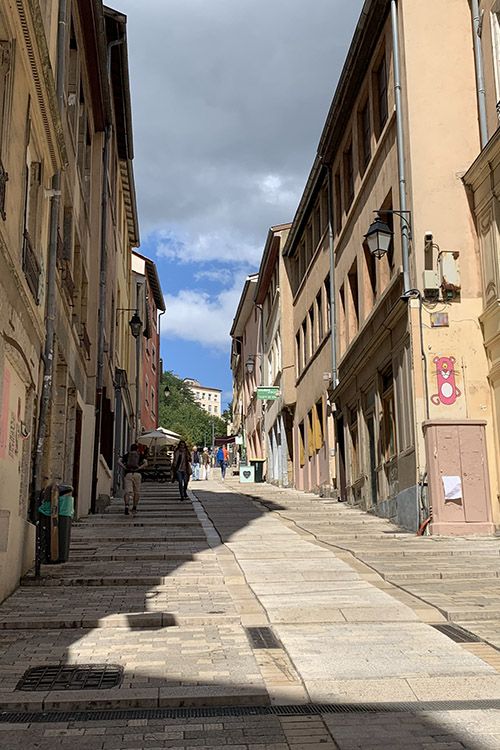
Notre-Dame de Fourvière
With your public transport pass you can use the little train that takes you from the Vieux Lyon (metro) station to the Basilica Notre Dame de Fourvière.
The basilica was built at the end of the 19th century on the site of the old forum of the former Roman emperor Trajan. Inside you’ll find a lot of marble, statues decorated with gold leaf and frescoes. In the crypt there are statues of the Virgin Mary, the patron saint of the city.
You can climb the towers for a magnificent view over Lyon. Admission is €4. However, you can also enjoy the beautiful view by walking around the basilica. You don’t just view the city, the Rhone and the Saône, but also the French Alps. In clear weather you can even see Mont Blanc!
By the way, if you are in good condition for walking, you can also climb the Fourvière hill through a fantastically beautiful, old alley. From the Rue du Boeuf, near the beginning of the Chemin Neuf, start the approximately 250 steps of the ‘Montée des Chazeaux’. As soon as you arrive at the Montée Saint-Bartélémy, you cross that street and continue the climb until you arrive at the Parc des Hauteurs. Through this park you then walk to the basilica. During the walk you have a beautiful view of the St. John’s Cathedral.
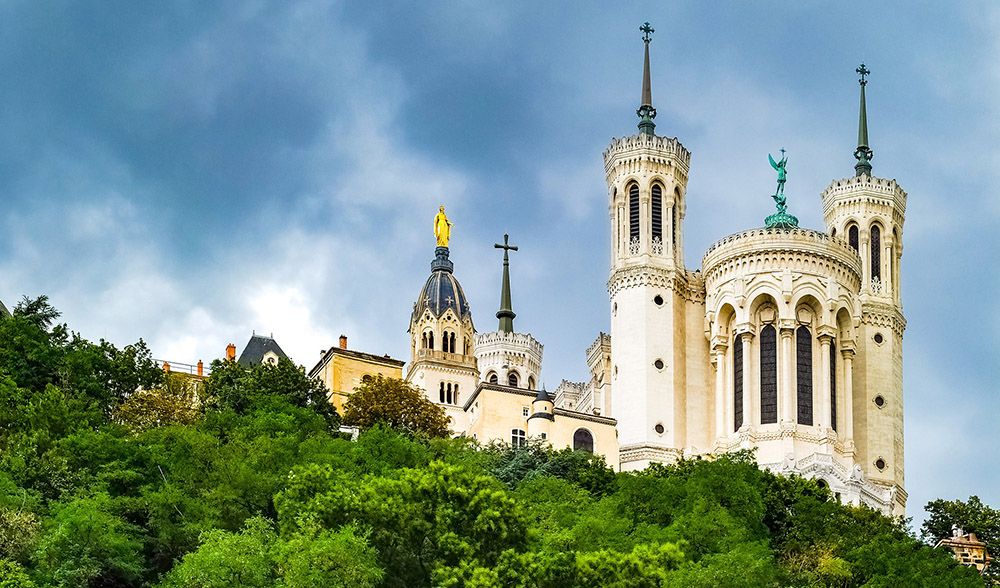
Dining at a Bouchon Lyonnais
After your visit to the basilica and the walk through the Parc des Hauteurs it is probably time for lunch. From the park you walk back to Vieux Lyon. On the way, you will visit the beautiful Jardins du Rosaire and – if you’re not too tired as yet – the old, impressive cemetery Cimetière de Loyasse. The more than 200-year-old cemetery is now a Christian as well as an Islamic resting place for many famous Lyonnais.
Apart from the many terraces and restaurants, you can also choose to have lunch in a so-called “Bouchon”. This is a small but very cosy, characteristic type of restaurant where you can go for delicious, local (meat) dishes for a good price. There is a friendly, intimate atmosphere. This type of restaurant dates back to the 17th and 18th centuries when silk workers came to the then still small inns for a simple but nutritious meal. As there has been a proliferation of bouchons that call themselves a traditional Bouchon since that time, there is a kind of quality label. On the site of Les Bouchons Lyonnais, you will find an overview of Bouchons with the quality label.
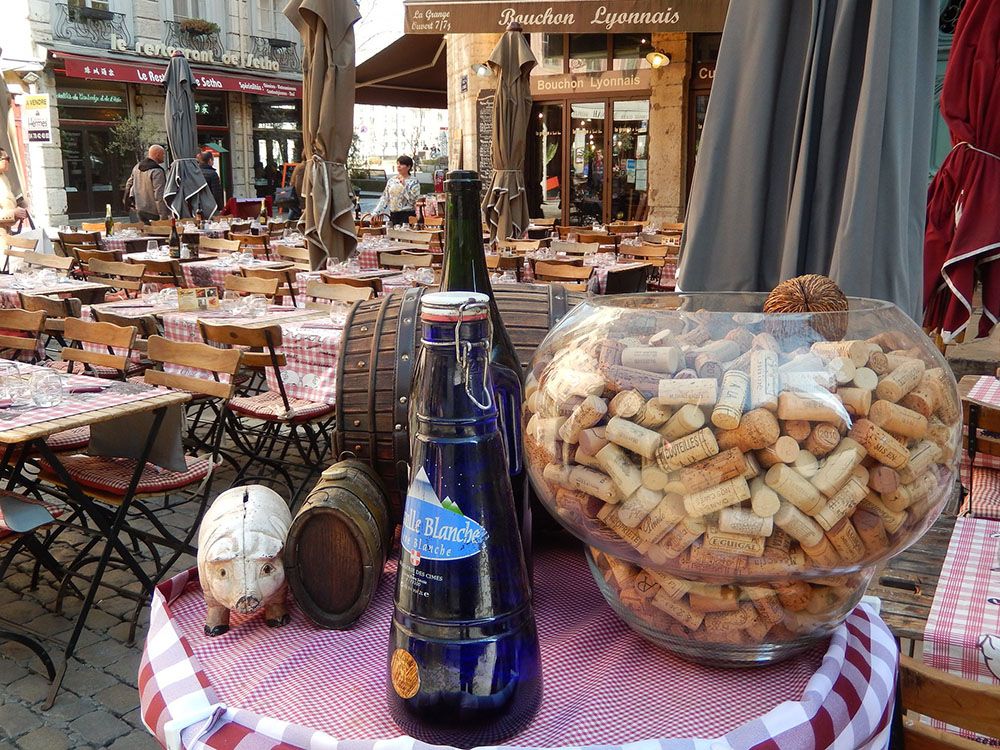
The hidden Traboules of Lyon
Once you have lunch in a Bouchon, it’s time for an interesting walk through some of the over 200 ‘Traboules’ that Vieux Lyon has to offer. A traboule is a hidden passage between two streets that you can enter through a front or back door. You usually end up in a covered, dark alley or in a courtyard with several houses.
This type of passage was originally used by silk manufacturers and other traders to get their products from the city to the river quickly. The silk was not allowed to come into contact with the outside air for long, which is why the passageways are mainly covered. During the Second World War the traboules were used to move the inhabitants through the city as inconspicuously as possible.
Of those 200 traboules, about 40 are open to the public. You can recognise them by a small yellow sign with a lion on it. You can also find them in a list on the Les Traboules de Lyon website. And there’s even a (French) app for your smartphone! Usually you have to press the bell if the door doesn’t open by itself. If you want to avoid ringing doorbells belonging to private individuals, you can also go for a walk with a guide. You will then hear all the juicy details and anecdotes. For more information please visit the Get Your Guide website.
Lyon Cathedral
The longest traboule can be found between rue du Boeuf and rue St Jean. The passage leads through no fewer than five beautiful courtyards. If you wish to return to Place Bellecour after that traboule via the Pont Bonaparte, visit the St. John, or the Cathedral of Lyon in any case.
The cathedral was built between the 12th and 15th century. For this reason, you will find a mixture of architectural styles, such as Romanesque and Gothic. Don’t miss the spectacular 14th century astronomical timepiece during your visit to St John’s! Above the main entrance, you will also find the rose window, a beautiful work of art depicting the life of St. Stephen and St. John the Baptist.
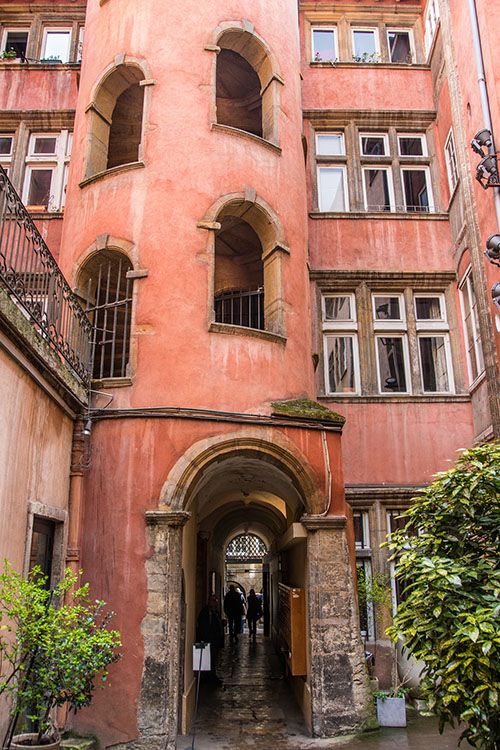
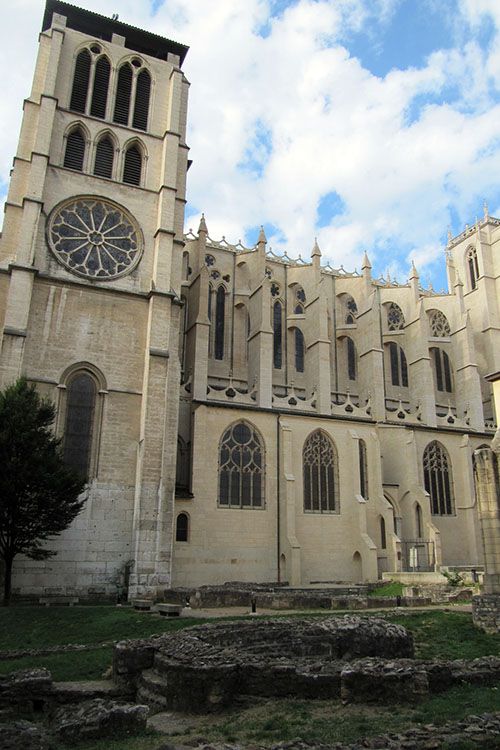
The districts of Presqu’ile and Croix-Rousse
Presqu’ile
Most of the city centre is located in the Presqu’île district, the peninsula enclosed between the Saône and the Rhône. The main attractions of this neighbourhood are the Place des Terreaux, the Place Bellecour and the Rue de la République.
At the Place des Terreaux you will find the beautiful town hall of Lyon and the museum of fine arts. In the middle of the square is a large fountain, with many terraces on both sides.
From Place Bellecour you can walk to Place de la Comédie de Rue de la République. It is the main shopping street in Lyon. Part of the street is only accessible to pedestrians.
Croix-Rousse
The Croix-Rousse district is located north of Presqu’ile on the slope of the 254-metre-high hill of the same name. In the 19th century, Croix-Rousse was the centre of the French silk industry. Many buildings and traboules are still evocative of that period. In addition, there is also the Maison des Canuts in the district, a museum dedicated to the silk industry. In the Maison des Canuts, the history of five centuries of silk culture is presented in fascinating fashion. A visit to the museum is an absolute must.
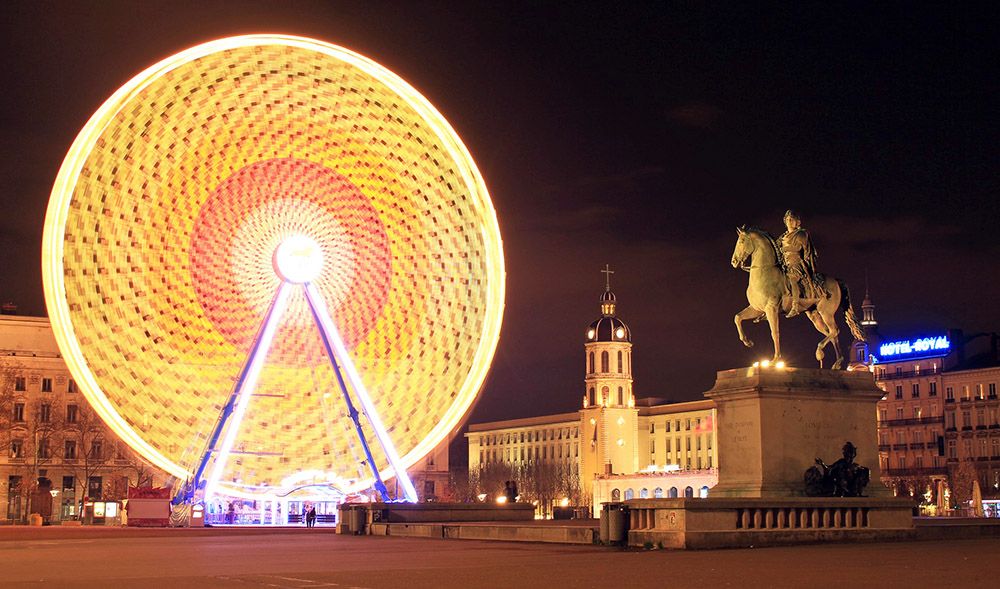
Annual events in Lyon
There are two annual events that are definitely worth attending: the Nuits de Fourvière from June to early August and the Fête des Lumières in early December.
Nuits de Fourvière
In summer, various events are organised on the Fourvière hill in the ancient Roman Antique Theatre of Lugdunum and the adjacent Odeion of Lugdunum. You can go there for concerts (pop music but also classical and jazz), and for dance, theatre and film performances.
Fête des Lumières
The light festival is by far the biggest, four-day event of the year. It began in the mid-19th century as a religious feast to celebrate the inauguration of the golden statue of the Virgin Mary, the patron saint of the city. Over the past decade, the festival has grown into an international event with artists from all over the world performing sound and light shows. The festival attracts around 4 million visitors each year. If you want to be there, it’s a good idea to book your accommodation well in advance.
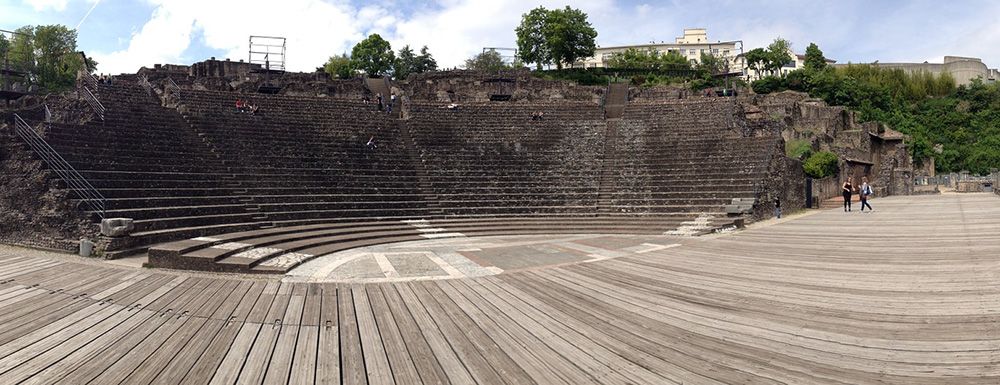
Practical matters
Accommodation
Lyon offers a wide range of accommodation in all price ranges. Only during the Fête des Lumières and at some important trade fairs such as SIRHA and POLLUTEC, will almost all the hotel rooms in and around Lyon be booked.
Transport to and within the city
From the Netherlands, there are several daily direct flights to Lyon. If you go by car, it would be wise to park outside the old, historic city. From there you can take public transport to the city. For €3 you can use the public transport in Lyon for 24 hours.
The city centre is not that big and most sights can be reached on foot. Another option is by bike. In Lyon there are many marked cycling routes. Keep in mind that there are also some hills that are serious calf killers! If your cycling or walking condition is insufficient for the many sights you would like to see, you can also use the metro or tram. A rule of thumb is that you will find a metro station every 10 minutes on foot.
Best time to visit Lyon
Lyon has a temperate maritime climate, but thanks to the location of the Massif Central there is less precipitation than in the west of France. In the summer it can get warm with temperatures of around thirty degrees. The most ideal time for a city trip is spring and (early) autumn. It is therefore less crowded in Vieux Lyon and Fourvière.
